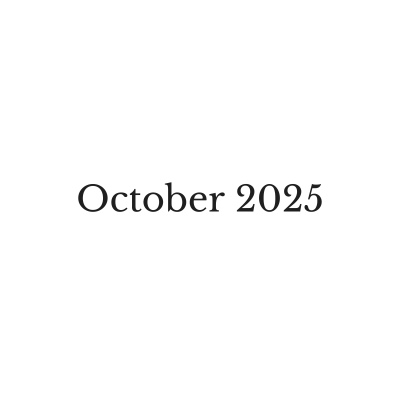FTSE 100 Dividend Data
This page shows upcoming ex-dividends dates for ordinary shares listed and supplied by the London Stock Exchange.
| Name | Dividend Ex Date | Dividend Pay Date | Dividend Per Share | Currency | Dividend Impact (Estimate) |
|---|---|---|---|---|---|
| British American Tobacco PLC | 29/12/2025 | 04/02/2026 | 60.06 | GBp | 1.41% |
| BT Group PLC | 29/12/2025 | 11/02/2026 | 2.45 | GBp | 1.33% |
| Auto Trader Group PLC | 02/01/2026 | 26/01/2026 | 3.80 | GBp | 0.63% |
| F&C Investment Trust PLC | 02/01/2026 | 02/02/2026 | 3.80 | GBp | 0.31% |
| Ashtead Group PLC | 08/01/2026 | 06/02/2026 | 0.38 | USD | 0.52% |
| Experian PLC | 08/01/2026 | 06/02/2026 | 0.21 | USD | 0.47% |
| Sage Group PLC/The | 08/01/2026 | 10/02/2026 | 14.40 | GBp | 1.32% |
| Diploma PLC | 15/01/2026 | 30/01/2026 | 44.10 | GBp | 0.82% |
| Compass Group PLC | 15/01/2026 | 26/02/2026 | 0.43 | USD | 1.35% |
Understanding Dividends
A dividend is a company’s way of distributing a segment of its earnings to its shareholders. Typically, these distributions materialise as cash payments to those owning the underlying shares.
The pivotal moment in this process is the ex-dividend date. It determines when trading in the underlying stock no longer incorporates an entitlement to the imminent dividend payment. As such, the value of the underlying share shrinks by approximately the dividend’s worth on this date.
If an investor held a position in the stock before and through the ex-dividend date, they would either be eligible to receive or obligated to pay the dividend, contingent upon whether their position is long or short. Conversely, those initiating a position on the ex-dividend date neither receive nor pay the dividend.
A Dividend Application Example
Consider an index containing several stocks, including XYZ PLC, which has announced a 7.978p dividend. If XYZ PLC’s price stands at 625.70p, constituting 6.45% of the index’s total value, and the index itself is valued at 7,000 points, then that 6.45% equals 451.5 points of the index. The 7.978p dividend implies a 1.27% dip in XYZ PLC’s share price (from 625.70p to 617.722p). Thus, the equivalent dividend deduction for the index is 5.733 points (451.5 multiplied by 1.27%).
Dividend Dynamics for Indices
Indices often represent the weighted mean share price of various underlying stocks trading on a shared exchange. Therefore, when any of these stocks announce a dividend, both the share’s and the index’s price reduce by the dividend value on the ex-dividend date.
For instance, consider an index containing several stocks, including Glencore, which has announced a 48.6p dividend. If Glencore’s price stands at 437.5p, constituting 2.87% of the index’s total value, and the index itself is pegged at 7,000 points, then that 2.87% equals 200.9 points of the index. The 48.6p dividend implies an 11.11% dip in Glencore’s share price (from 437.5p to 388.9p). Thus, the equivalent dividend deduction for the index is 22.319 points (200.9 multiplied by 11.11%).
Holding either a long or short position of 30 units of this index would result in a credit or debit of £223.19 (10 multiplied by 22.319).
Dividends and Call Options
Price Adjustments
When a company declares a dividend, the price of the underlying stock often adjusts downward on the ex-dividend date. This adjustment can impact the price of call options. Specifically, the expected drop in the stock’s price might lead to a decrease in the price of its associated call options prior to the ex-dividend date.
Early Exercise
American-style call options, which can be exercised before the expiration date, are particularly sensitive to dividends. If a dividend is expected, the holder of an in-the-money call option might choose to exercise the option early to capture the dividend. This is more probable if the dividend amount surpasses the time value remaining in the option’s price.
Dividends and Put Options
Price Appreciation
As the stock price typically drops by roughly the dividend amount on the ex-dividend date, put options, which profit from a decline in stock price, might experience a corresponding appreciation in value.
Potential Increase in Demand
Anticipation of a price drop due to a forthcoming dividend might spike the demand for put options, driving up their price. Investors may seek to buy put options as a hedge against potential declines in the stock’s value post the ex-dividend date.
Key Considerations for Options Traders
Ex-dividend Date Awareness: Options traders should be well-acquainted with the ex-dividend dates of stocks they trade options on. This knowledge aids in predicting potential price movements.
Dividend Magnitude: Not all dividends are created equal. The size of the dividend can significantly influence option prices. A larger dividend generally has a more pronounced impact on option premiums.
Time Decay and Dividends: Options inherently possess a time value that diminishes as they approach expiration. This time decay can intertwine with dividend impacts, particularly for options close to expiration.
Implied Volatility: Post the announcement of dividends, implied volatility—a metric indicating the market’s forecast of a stock’s future movement—may change. Traders should monitor this as it directly affects option pricing.
Strategies Involving Covered Calls: Investors using a covered call strategy, wherein they hold the underlying stock and sell call options on it, should be vigilant. The call might be exercised early by its holder seeking to capture the dividend, especially if it’s an American-style option.




